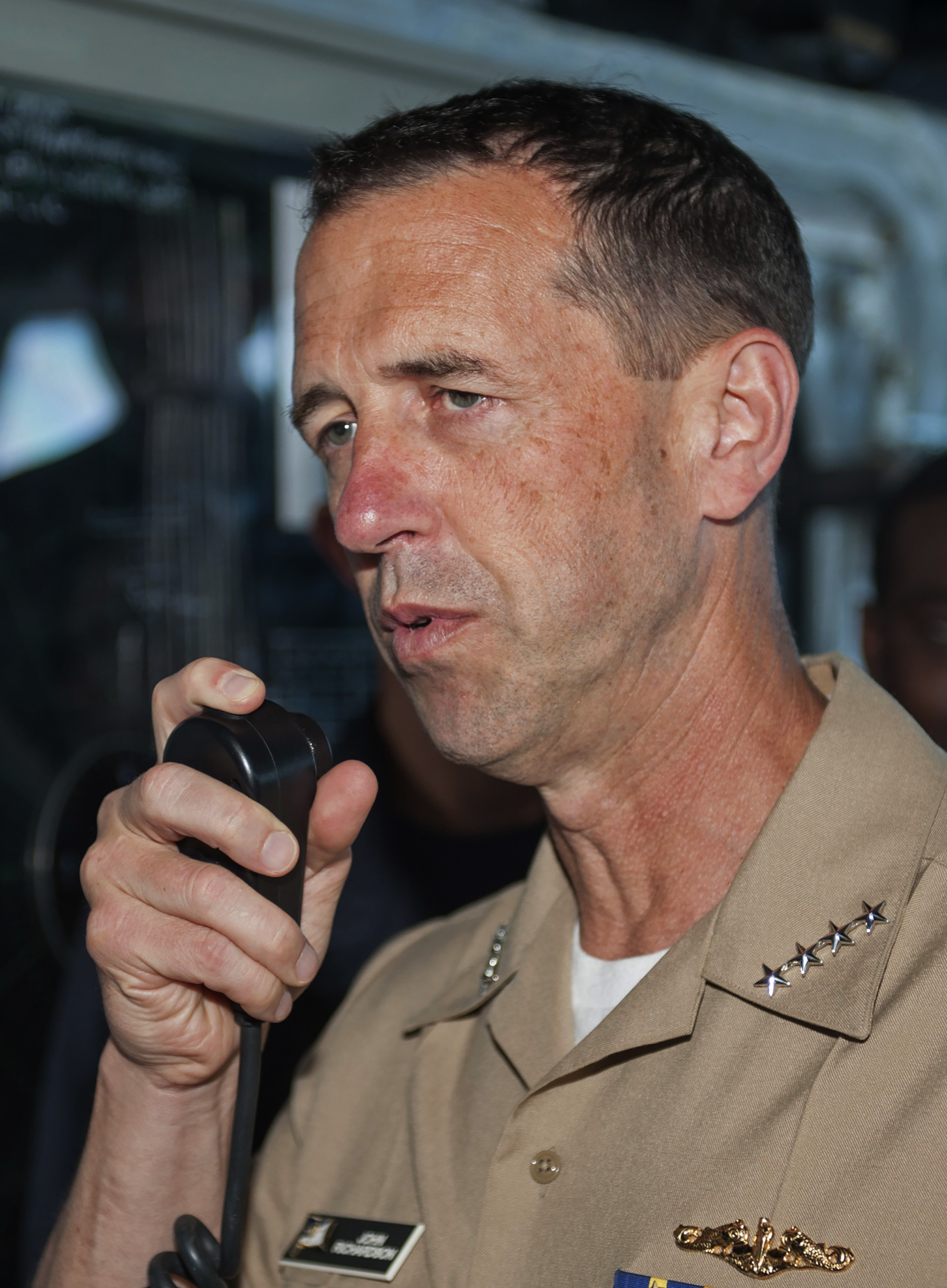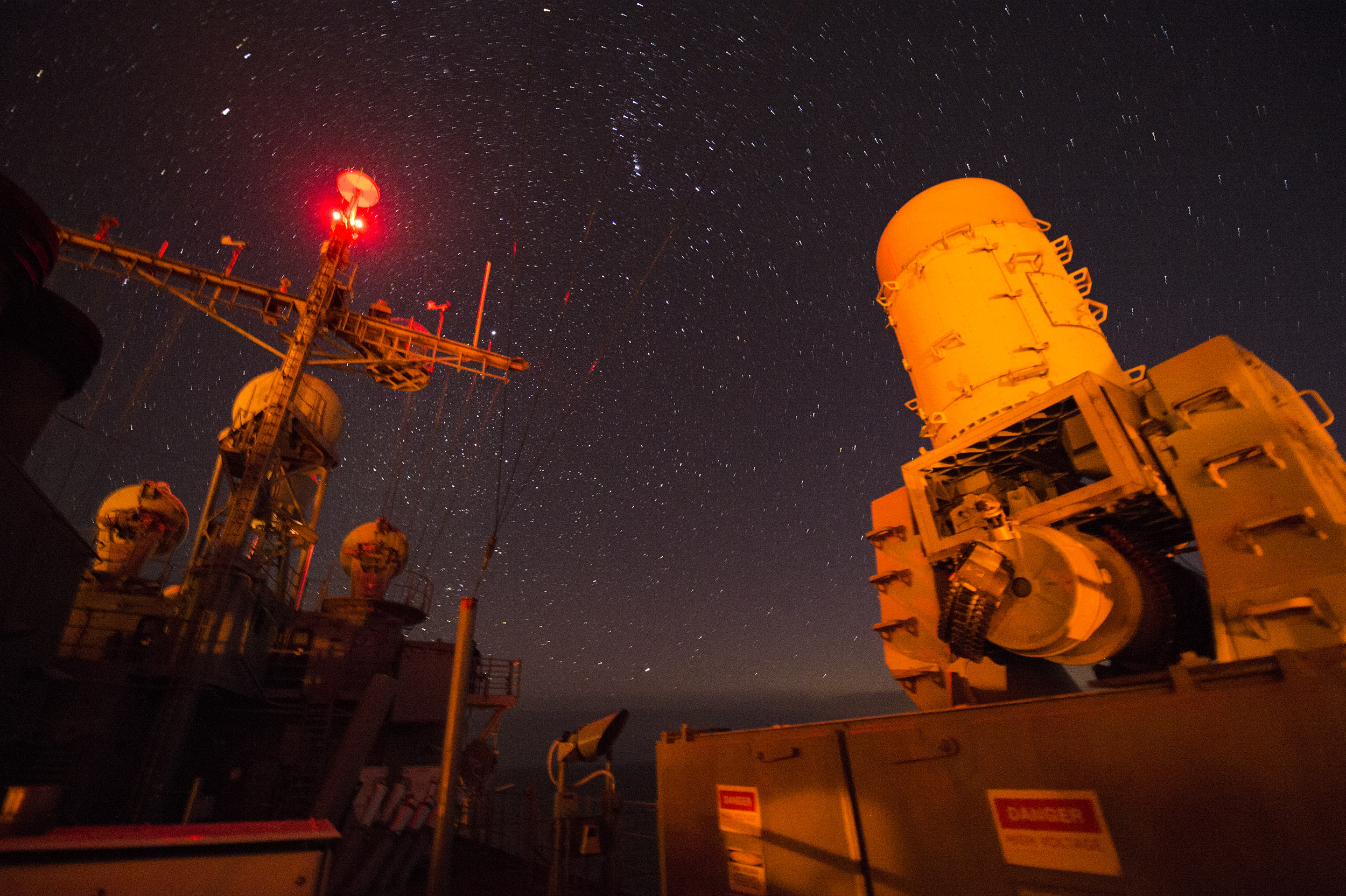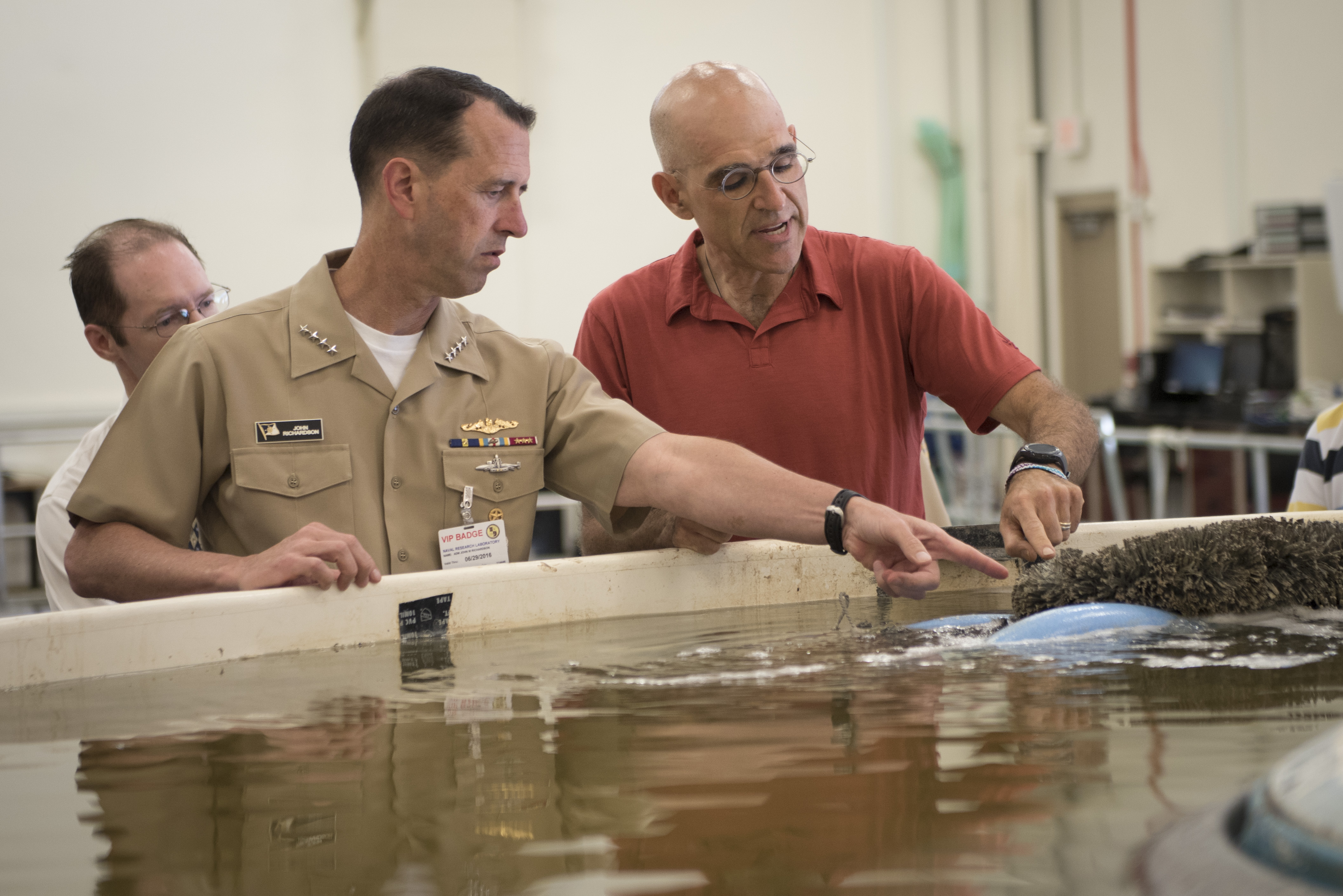
THE PENTAGON – Adm. John Richardson has served as chief of naval operations shy of one year, and spent much of his tenure thinking about the fleet of the future.
In the works now are efforts to revise the Navy’s force structure assessment, reconsider how the Navy will carry out its most fundamental missions, and codify the importance of innovation in pushing the fleet forward.
In an interview last week with USNI News, Richardson detailed these concurrent efforts. All three tie back to his 10-page directive, “The Design for Maritime Superiority,” which emphasized four lines of effort: “strengthen naval power at and from the sea, achieve high-velocity learning at every level, strengthen our Navy team for the future and expand and strengthen our network of partners.”
Even this document may be reevaluated, he said, calling it a “1.0” version – but the CNO’s guidance to the fleet is already well on its way to being implemented.
“Those are pretty high-level tasks, so a lot of the work in the intervening eight months has been to get down into detailed problem analysis, problem definition, to find the plan of action, the milestones to specifically achieve those tasks. When you’re talking about something as big as fleet design and those sorts of things that’s a pretty big undertaking,” he said.
“Much of what the design describes is – let’s look forward and figure out how the Navy should adapt to meet today’s and the emerging security environment.”
Fleet Architecture

In the short term, the Navy is set to reevaluate its total battle force number goal as part of an internal force structure assessment.
“Today we have a number of 308 as a fleet size out there. That’s based on the [Fiscal Year] 2012 force structure assessment and it was updated in [2014] I think, and so this will be an update to that analysis and that might come out with a number that’s different from 308,” Richardson said.
“I’ll be shocked if it comes out to 308 again.”
That’s the near-term evaluation – that will likely be included in the FY 2018 budget. Request. But the Navy is also looking beyond the ship numbers into what fundamental changes the service might make in the far future via three different studies.
The MITRE Corporation, Center for Strategic and Budgetary Analysis (CSBA) and the Navy are conducting three separate studies – due in the next few weeks – that will coalesce into a new fleet design, Richardson said.
“These fleet design issues are less specific, more capabilities-based,” he said.
“There will be an operating and warfighting component to that new fleet design, new ways of getting at sea control and some of those other things that it describes. Some of that work is being done now, we’re using the fleet in different ways as we build that readiness and deploy that readiness forward.”
He mentioned the surface Navy’s distributed lethality effort – the surface forces’ push to put more offensive power on surface ships – and how the service expanding warfare in the electromagnetic spectrum as examples of how the Navy is adjusting existing resources for different tasks.
“Having said all that, there is this budgetary issue, and so part of the solution I think in the gap between the complexity of the security environment and the demands of that environment and sort of the flat resourcing environment is coming up with more creative ways to use this force that we got,” he said.
Innovation

To address that dichotomy of flat funding and a pressing need to evolve, the Navy needs to embrace fleet experimentation and rapid prototyping, the CNO said. Every community in the Navy has innovative ideas for how to create greater capability now and down the road – everything from repurposing current weapons for additional uses in the short term, to designing innovative new surface combatants and submarines that may not resemble the ships in today’s fleet. And while there may not be money to support traditional research and development efforts – which can be lengthy and costly – Richardson said he sees a place for experiments and prototypes designed to gain knowledge and retire risk as early as possible.
“The conversation usually goes, well how tolerant of failure are you going to be?” he said.
“Well, this is a different way of doing business, so we shouldn’t be too surprised if an idea, an occasional idea, just doesn’t pan out or it fails. As long as we learn from that, and we do it as cheaply as possible, then I think we’re doing pretty good work.”
To be able to quickly prove out innovative concepts and field a new technology – potentially years faster than would be possible under the traditional acquisition system, would be “state of the art.”
In some ways, Richardson has some top cover from the Office of the Secretary of Defense – the Third Offset Strategy rolled out in 2014 advocates rapid prototyping and experimentation, and Richardson said the strategy is as much about speed to fleet as it is about any single technology area.
Still, the Navy does not have carte blanche to experiment however it wants.

“There’s OSD, who has responsibility in this acquisition business, and we have to respect that. Then there’s Congress, who’s got oversight responsibilities, and we’ve got to respect that,” Richardson said.
“Now you start to see the kind of challenge that faces us in terms of, okay, how are we going to get this thing to speed up, do business maybe a little bit different with this rapid prototyping, while respecting the oversight responsibilities of these other folks? How are we going to allow them to oversee this, gain confidence, feel like they’re able to execute their responsibilities, while still moving faster?”
The CNO said there’s a “healthy conversation going on right now” between these parties, as well as with industry, and he expects to write a Navy instruction soon to clarify the service’s approach to rapid prototyping.
“I always like writing things down. … Our thinking will become clearer, we can give this instruction to people that they can now read it and understand a little bit more clearly what we’re about, and I think that that’s the next step,” he said.
“We’ve sort of conceptualized this thing, but for a lot of good reasons people still have questions.”
As for the actual experiments, Richardson said sailors are providing a steady stream of innovative ideas through “innovation jams” held throughout the fleet, in mission area-specific efforts such as Tactical Advancements for the Next Generation (TANG) Forum, and geographical efforts such as the U.S. Pacific Fleet’s “The Bridge” innovation drive.
“There’s no shortage of good ideas, I’ll say that, so where I’m trying to focus is the much less exciting process development, so that when you have a genius idea, what’s the quickest way to make that thing real?” Richardson said.
The CNO did not name particular technologies or research areas for the Navy to prioritize, but rather he said the service should pursue enough experimentation and prototyping ideas so as to make it routine, so that any innovative idea related to any technology area could be acted on quickly.
“There’s no shortage of smart people thinking up great thoughts, but if the environment isn’t receptive to that good idea it’s just going to be like throwing seed on (Interstate) 95: it’s just going to bake there until it dies,” Richardson said.
“The environment’s got to be fertile to turn those ideas into something real.”





